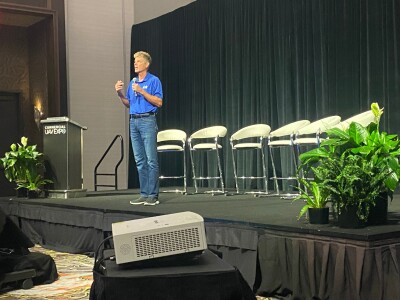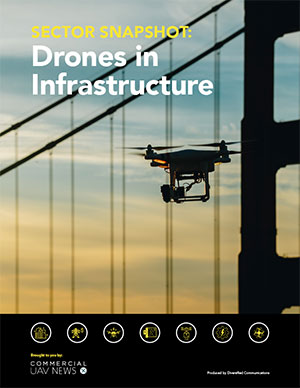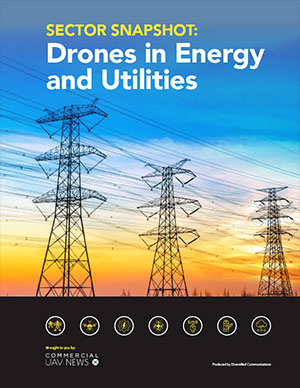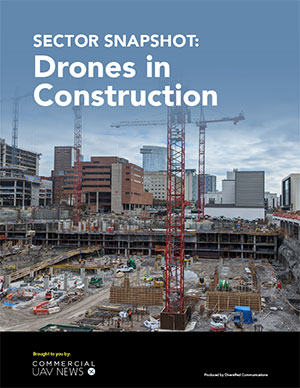As UAV technology continues to proliferate across multiple sectors, organizations are continuing to implement drones into their workflows, driving real results to their bottom line. Even with this continued adoption, however, the amount of actual drone use remains a fraction of what it should be across all of these industries. Given the rapidly evolving technology, changing regulations, and just general complexity around the tools, many organizations are waiting for the “perfect” moment to start implementing drones into their workflows.

That waiting is to their detriment, a topic covered extensively in the keynote session that kicked off the second day of Commercial UAV Expo. This session was split into two parts, with the first being led by Buzz Solutions co-founder and CEO Kaitlyn Albertoli, who was joined by Thomas F. Butler, UAS manager with Dominion Energy. Following their conversation, a presentation was given by HDR’s Carlos Femmer and P. Chad Maxwell, who were joined by recently retired FAA employee Kerry Fleming.
The 60-minute keynote session began with a quick presentation from Albertoli, who talked about the aforementioned problems around organizations waiting to adopt drone technology into their workflows. She ran through five key components for how companies should be thinking about their drone programs. Wrapping up the presentation, she spoke directly to these companies that are hesitating with their adoption, and why inaction can result in tangible losses.
"The essential question I think we should all be asking ourselves as we're going through this conference this week is: How do we cut through the noise, and start to really see the value and practical applications of how we can be leveraging drone technologies today?"
Following the initial presentation, Albertoli was joined on stage by Butler for a fireside chat, diving more into the issues discussed in the initial presentation. Specifically, the two discussed how companies can actually quantify the ROI delivered by this adoption in order to justify the initial costs to other stakeholders within the company. Butler has plenty of experience doing just this with Dominion, and he shared some of his best practices in how they built a UAS program that built clear and demonstrable value. Specifically, he stressed the importance of continuing to look forward.
"What got us here won't keep us here," he told the keynote audience. "That's really important, because if you look at the workforce today, it's the workforce that wants to use technology. How can we leverage that and use it for working smarter, not harder, and really be able to know more information than we've ever known before?"

The second half of the keynote brought Femmer, Mazzwell, and Fleming to the stage to discuss a ground-breaking project, displaying a tangible example of how their drone program created value. HDR, with help from agencies like the FAA, became the first company to complete a drone-based surveying project in the Grand Canyon. As one can imagine, this project included jumping through various regulatory hoops to ensure they had proper access to the National Park. Fleming talked about his team in the airspace division at the FAA, and how they thrived working out logistics for these complex projects.
"You have this unique situation [for flying through the Grand Canyon], and that's where my group thrives," Fleming said. "Where your company and other companies that are trying to do the same thing are faced with the unknown and can't get the airspace authorization, you come to my group and we figure it out."
It goes without saying that most organizations’ drone programs are not going to be completing projects exactly like capturing data at the Grand Canyon, but there were clear takeaways that can apply to drone programs of all types. Femmer and Maxwell detailed how they worked to integrate various UAVs to collect all of the data they needed, and the processes for ensuring smooth integration. Importantly, they talked about all of the ways that these different integrations were able to provide value with a variety of use cases, such as providing orthoimagery, providing the basis for a digital twin, and even creating a virtual site visit.
"Instead of sending a bunch of bidders into the Canyon and having to walk through, we're able to bring the data [we had already collected] through a virtual site visit, as one component of how we created value from the data," Femmer said.
One thing was clear from this entire keynote session: Working on the front-end to determine the value drones can provide for your workflow, and how to best translate that use into demonstrable ROI, will pay off multiple times over in the long run. As the rest of Wednesday at Commercial UAV Expo dives into more specifics around drone implementation across industries, this keynote set the stage for many of those discussions.















Comments